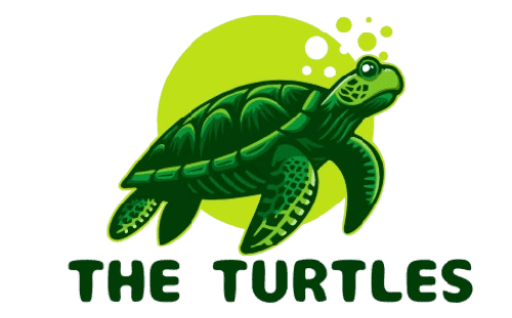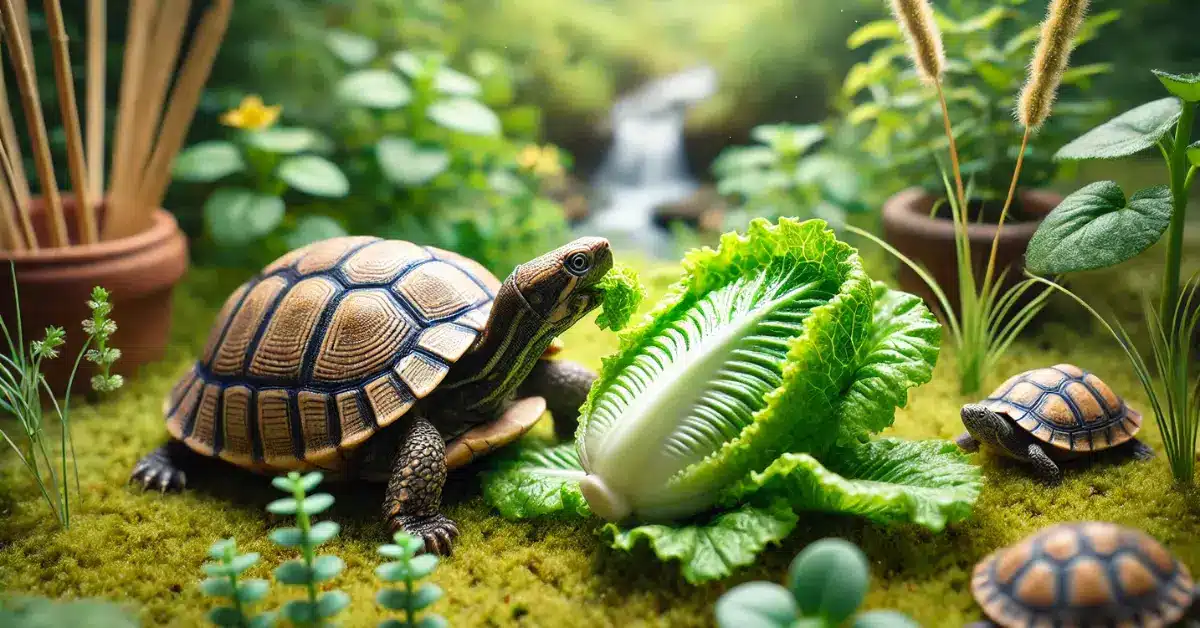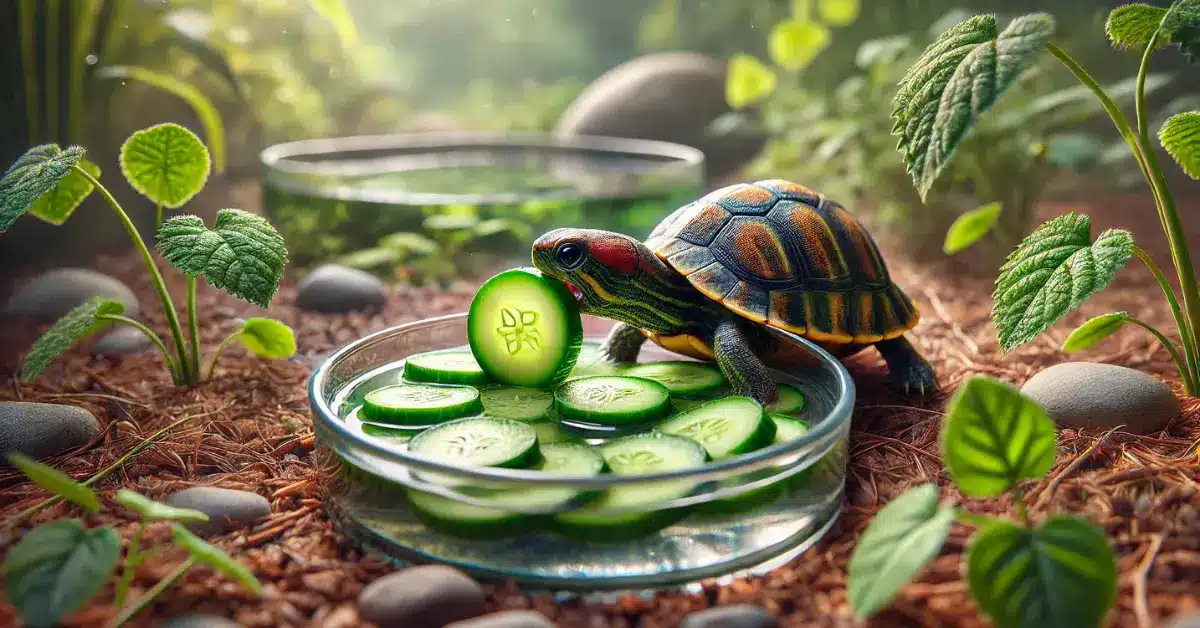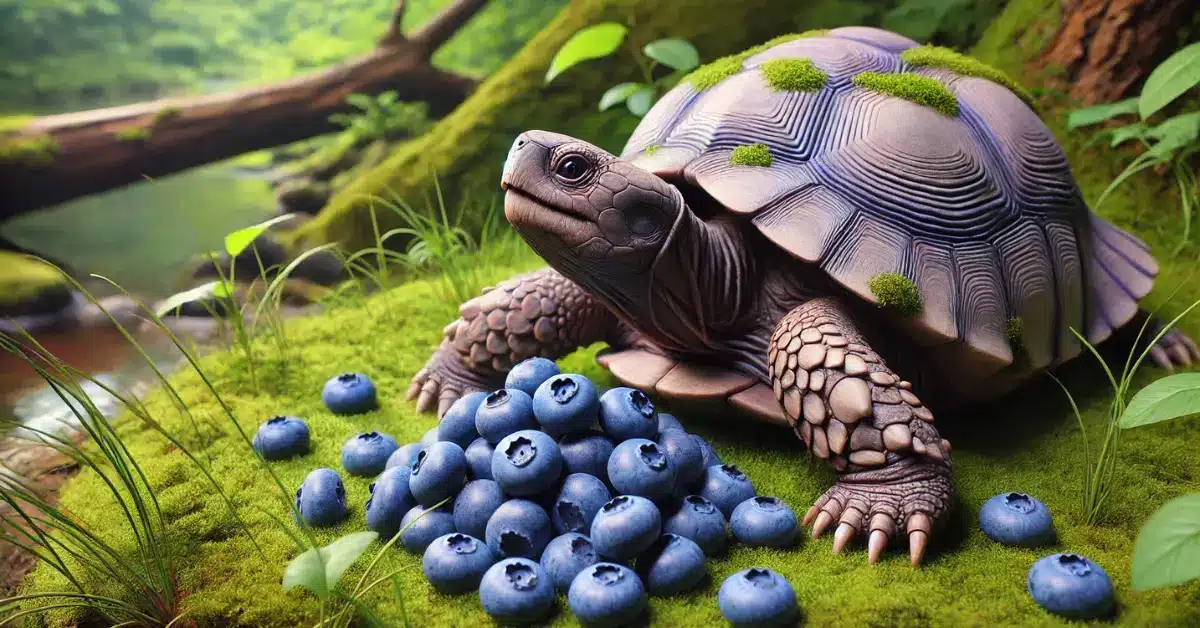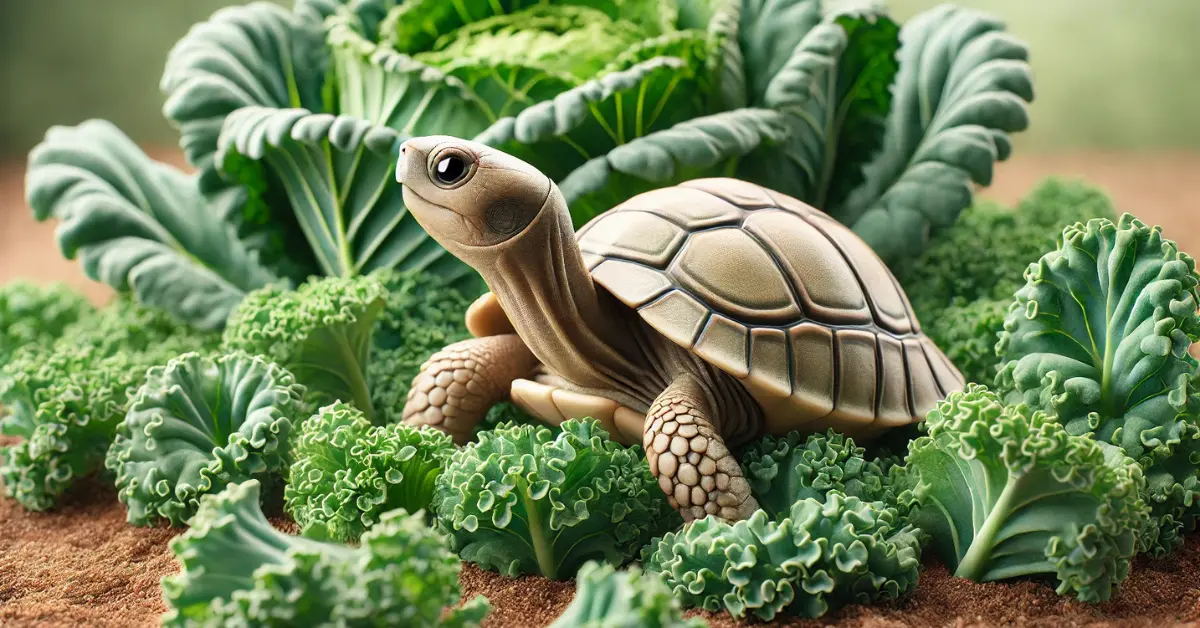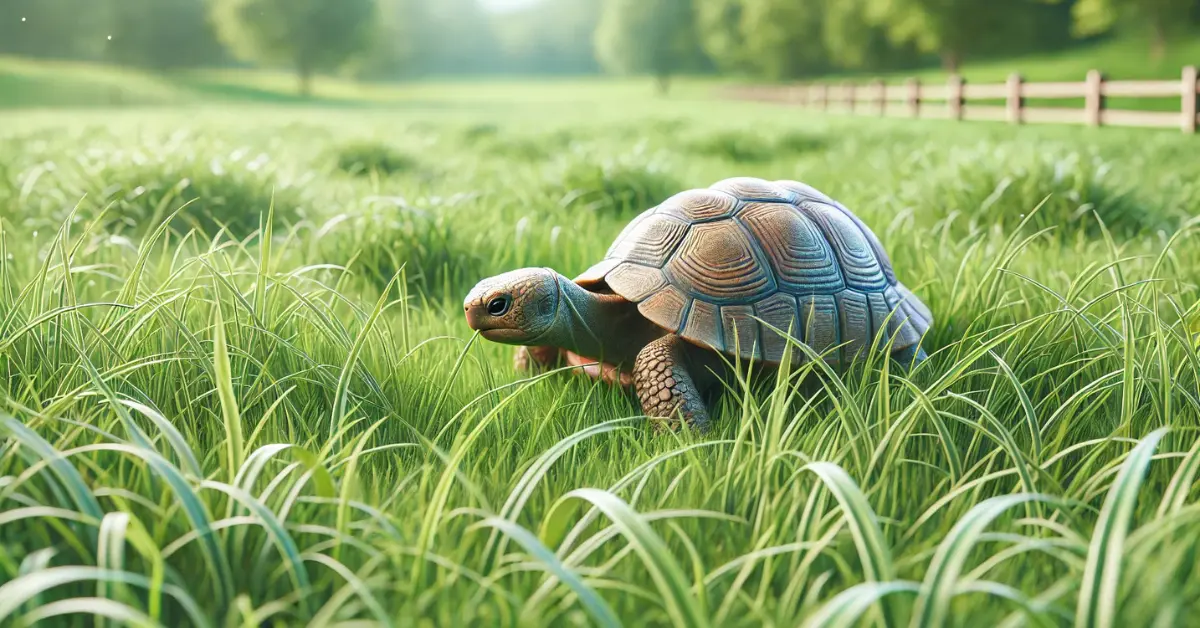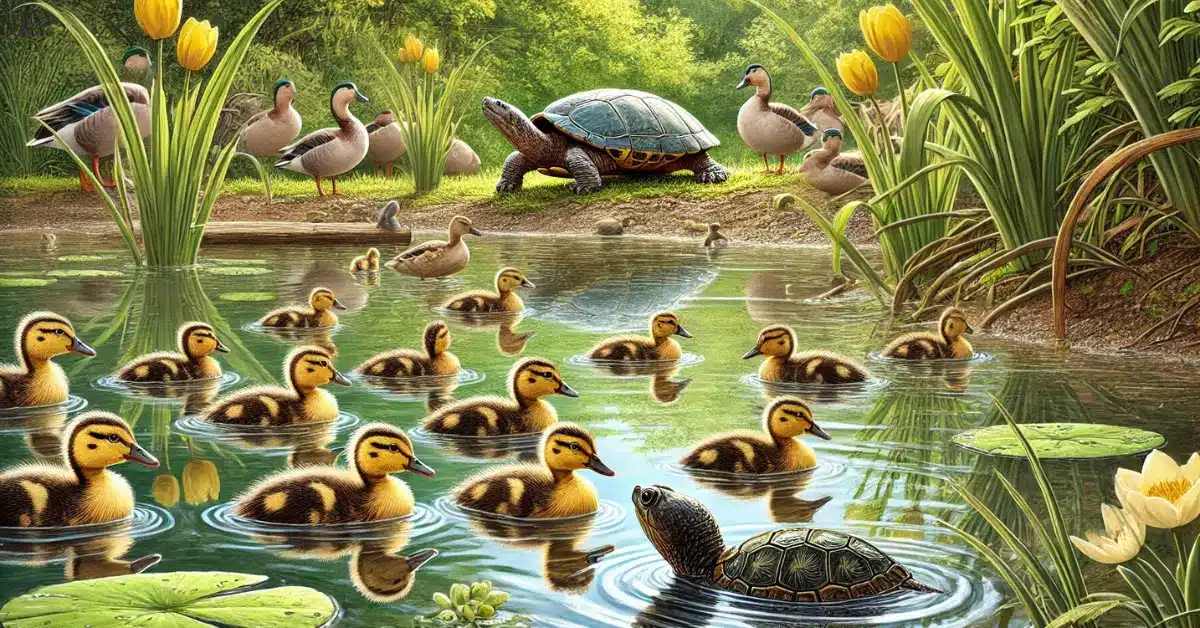Welcome to Theturtles.info! Today, we’re going to find out what do Russian turtles eat? Learn about these cool turtles from Central Asia, what they like to eat in the wild, and how to feed them if you have one as a pet. Let’s explore how to keep these turtles happy and healthy!
Table of Contents
ToggleUnderstanding Russian Turtles
Meet the Russian Turtle: Testudo horsfieldii
Russian turtles, also known as Horsfield’s tortoises, are interesting animals. They come from places in Central Asia where it’s often very dry and a bit rocky. Learning about them helps us know what they need to eat and how to take care of them.
Where They Live and What They Do
These turtles live in dry places like sandy areas and rocky hills. They are very good at dealing with hot and cold weather. Watching them in their natural home shows us what they eat and how they manage to live in such tough places.
What They Eat in the Wild
Russian turtles mostly eat plants. They like grasses, flowers, and other plants found where they live. They spend a lot of their time looking for food when it’s warm. It’s important to make sure they eat similar foods when they are kept as pets, so they stay healthy.
The Russian Turtle’s Natural Diet
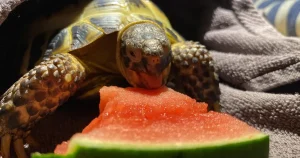
Primary Food Sources in Their Native Environment
In the wild, Russian turtles have a diet that mainly includes various native plants. They often eat leaves, stems, and even some flowers they find in their habitats. These provide the nutrition they need to stay healthy and active.
Seasonal Variations in Food Availability
The availability of food for these turtles changes with the seasons. During spring and summer, they have plenty of fresh plants to eat. However, in colder months, food becomes scarce, and the turtles may eat less and move less, conserving their energy until the weather warms up again.
Foraging Behavior and Preferences
Russian turtles are active foragers. They spend a lot of their time searching for food. They tend to prefer fresh, green plants and will often choose these when they have options. Observing their foraging habits helps us understand what foods they like best and need most.
Essential Nutrients for Russian Turtles
- Key Vitamins and Minerals: Vitamins and minerals are crucial for the health of Russian turtles. They need vitamin A for good vision and a healthy immune system, and calcium, which is vital for a strong shell and bones. It’s important to ensure their diet supports these needs.
- Protein Requirements: While Russian turtles are mainly herbivores, they do need some protein in their diet. This can come from the occasional small insect or animal protein found in their natural diet. Protein helps them grow and repair their bodies.
- Importance of Fiber in Their Diet: Fiber is a big part of what Russian turtles eat. Eating lots of plants means they get a lot of fiber, which helps keep their digestion running smoothly. Making sure they have enough fiber is key to keeping a turtle healthy.
Ideal Foods for Russian Turtles
- Leafy Greens: The Staple of Their Diet: Leafy greens are the main part of a Russian turtle’s diet. Foods like romaine lettuce, dandelion greens, and kale are great choices. These greens provide lots of nutrients and are easy for the turtles to eat and digest.
- Vegetables: Nutritious Additions: Adding other vegetables can help make sure Russian turtles get all the vitamins they need. Squash, carrots, and bell peppers are good options. These should be chopped into small, manageable pieces to make them easier for the turtles to eat.
- Fruits: Occasional Treats: Fruits are like treats for Russian turtles and should be given in moderation. You can give apples, berries, and melons to your turtle sometimes as a treat. Fruits are high in sugar, so they should only be a small part of the diet.
- Flowers: A Colorful and Nutritious Option: Some flowers, like hibiscus and dandelions, are not only safe for Russian turtles to eat but are also nutritious. These can add variety to their diet and make their meals more interesting.
Foods to Avoid
- Toxic Plants and Vegetables: Certain plants and vegetables can be harmful to Russian turtles. Avoid anything from the rhubarb family, potato leaves, and tomato plants as these can be toxic.
- High-Oxalate Foods: Foods high in oxalates, such as spinach and beet greens, should be avoided. Oxalates can bind to calcium and prevent its absorption, which is not good for the turtle’s shell and bone health.
- Protein-Rich Foods and Their Risks: While Russian turtles need some protein, too much can be harmful. Avoid giving them a lot of animal protein like dog food, cat food, or meat. This can lead to health problems and does not match their natural herbivorous diet.
Feeding Russian Turtles in Captivity
- Replicating a Natural Diet: When you have a Russian turtle as a pet, try to feed them like they would eat in the wild. Give them lots of leafy greens, some vegetables, and a little fruit now and then. This helps them eat right and act like they would in nature.
- Commercial Turtle Food Options: You can also buy turtle food from the store that’s made just for turtles. Use this as part of their diet but still give them fresh foods for the best nutrition. Pick good quality food that’s natural and avoid anything with fake colors or stuff that’s not good for them.
- Supplementing with Vitamins and Minerals: Sometimes, turtles need extra vitamins and minerals, like calcium and vitamin D3. These are important to keep their shells strong and to keep them healthy overall. You can sprinkle a special powder on their food to give them these extra nutrients.
Feeding Schedule and Portions
- How Often to Feed Russian Turtles: How often you feed your turtle depends on how old they are and how active they are. Young turtles that are still growing might need to eat every day. Older turtles might only need to eat every other day.
- Appropriate Portion Sizes: A good rule is to give your turtle enough food to fit in the size of its shell at each meal. This helps make sure you’re not feeding them too much or too little.
- Adjusting Diet Based on Age and Size: As your turtle grows, you’ll need to change how much and what you feed them. Little turtles need more protein and need to eat more often. Big turtles need more fiber and less food at each meal.
Hydration and Water Needs
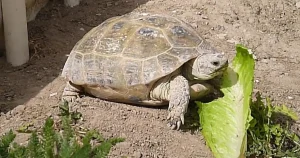
Importance of Fresh Water
Always make sure your Russian turtle has access to fresh water. Turtles need to drink water to stay healthy just like we do. Fresh water helps them digest their food properly and keeps their body working well.
Soaking Habits and Hydration
Russian turtles also like to soak in water. This isn’t just for fun—it helps them stay hydrated and clean. Make sure there’s a shallow dish of water that’s easy for them to climb into and out of whenever they want to have a soak.
Water Dishes and Habitat Humidity
The dish for water should be big enough for the turtle to sit in, and you should change the water every day to keep it clean. The humidity in their living area is also important, especially for their shells. A humid habitat helps prevent shell problems and keeps their skin healthy.
Special Dietary Considerations
Juvenile Russian Turtle Nutrition
Young Russian turtles, or juveniles, need a diet that supports their growth. They need more protein and more frequent meals compared to adult turtles. Feeding them correctly helps them grow strong and healthy.
Breeding Season Dietary Adjustments
During the breeding season, adult turtles might need different foods or more food. This helps them have the energy they need for laying eggs or mating. Pay attention to their needs during this time to help them stay healthy.
Addressing Health Issues Through Diet
Sometimes, turtles can have health problems that can be helped by changing their diet. For example, if a turtle has a shell problem, adding more calcium to their diet might help. Always talk to a vet if you’re not sure what to do.
Common Feeding Mistakes
Overfeeding and Obesity Risks
One big mistake is giving turtles too much food. This can make them overweight, which is bad for their health. Always follow the feeding guide for how much and how often to feed them.
Lack of Variety in Diet
Turtles like to have different kinds of food in their diet. If they eat the same thing all the time, they might not get all the nutrients they need. Try to give them a mix of different vegetables, leafy greens, and occasional fruits.
Improper Food Preparation
Make sure to prepare the food in a way that’s safe and easy for them to eat. Chop the food into small pieces that they can easily swallow. Never feed them food from the fridge that’s too cold, as it can be a shock to their system.
Creating a Balanced Meal Plan
Here’s a simple weekly plan to help you feed your Russian turtle:
- Monday, Wednesday, Friday: Give them different leafy greens like romaine lettuce and dandelion greens.
- Tuesday, Thursday: Add some veggies, like shredded carrots and squash.
- Saturday: Treat them to a little fruit, such as berries or a slice of apple.
- Sunday: Give them a break from food, just offer fresh water. This helps their digestion.
Rotating Food Items for Variety
It’s good to change up the foods you give your turtle. This keeps their meals exciting and makes sure they get all the nutrients they need. Try to switch between various greens and vegetables throughout the week.
Seasonal Adjustments to Mimic Natural Patterns
Change your turtle’s diet with the seasons. In the spring and summer, offer lots of fresh greens and veggies. In the fall and winter, you might give them more hay and dried foods, like their natural habitat would.
Observing Your Russian Turtle’s Eating Habits
Signs of a Healthy Appetite
A healthy turtle will be happy to eat, especially when you give them fresh food. They should be looking for food and eating it regularly. If they like trying different foods, that’s a great sign.
Recognizing Feeding Problems
If your turtle stops eating, eats less, or just picks at their food, they might not be feeling well. Also, if they eat too fast or have trouble swallowing, those could be signs of problems.
When to Consult a Veterinarian
If your turtle’s eating habits change and don’t get better, you should talk to a vet. They can check if your turtle is sick and help figure out how to make them feel better.
Read more: What Do Pond Turtles Eat?
Conclusion: What Do Russian Turtles Eat?
We’ve explored a lot about what do Russian turtles eat? on Theturtles.info, covering everything from their natural diet to how to feed them properly in captivity. Keeping a Russian turtle healthy involves providing a balanced diet that mimics what they would find in the wild. This includes plenty of leafy greens, some vegetables, the occasional fruit, and making sure they have fresh water available at all times.
It’s also important to watch how your turtle eats to catch any signs of health issues early. Changes in their eating habits can indicate a need for a diet adjustment or even a visit to the vet. By understanding and responding to their needs, you can ensure your Russian turtle has a long, happy life.
Remember, a healthy diet is crucial, but so is creating a habitat that feels like home to them. This combination of proper diet and environment will keep your turtle thriving. For more insights and tips on caring for your turtle, keep visiting Theturtles.info. Here, we’re committed to helping you provide the best care for your shelled friends.
